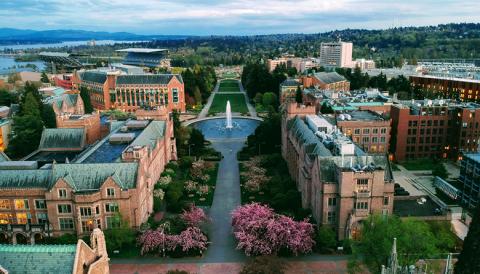University of Washington Seattle
Institute
The UW Physics Department has one of the world’s most versatile and broad-spectrum programs in experimental particle physics. Our high-energy physicists contributed to the discovery of the Higgs boson at the LHC Collider in Geneva and are studying both the Higgs decays and the possible presence of other physics, such as Hidden Valley, Supersymmetry and Extra Dimension. CENPA neutrino physicists contributed to the discovery of neutrino mass and oscillations with the Sudbury Neutrino Observatory, and are now working on direct measurement of the mass with the KATRIN and Project 8 experiments, and seeking the answer to the question of whether neutrinos are their own antiparticles or not in the Majorana and SNO+ experiments. The contribution at SuperKamiokande in UW related to the oscillation and mass discovery.
The muon and the neutron are themselves little laboratories in their rich physics potential. UW contributed to the discovery of what appears to be a significant disagreement between the magnetic moment of the muon and the theoretical prediction for it. This may signal new physics, and a still more sensitive “g-2” experiment is being constructed by them and Prof. Zhao at Fermilab. The study of the electron-neutrino correlations of the free neutron decay, and also the decay of the nucleus 6He, places where new physics may show up as well.
The axion is a particle whose existence is predicted to explain a puzzle in particle physics. Intriguingly, the axion may not only exist, it may in fact be the mysterious dark matter. UW has the world’s most sensitive microwave detector for axions and their search is getting under way.
Another kind of dark matter is the Weakly Interacting Massive Particle, or WIMP. If these particles were made in comparable amounts as matter and antimatter partners, they could be annihilating at the center of the galaxy. The Fermi Large Area Telescope is sensitive to the gamma rays that might result.
Suprisingly, particle physics is being done on a table top! Are there extra dimensions beyond the 4 we know? Are there very light particles that transmit forces similar in range to gravity? UW physicists use sensitive torsion balances to find out.


